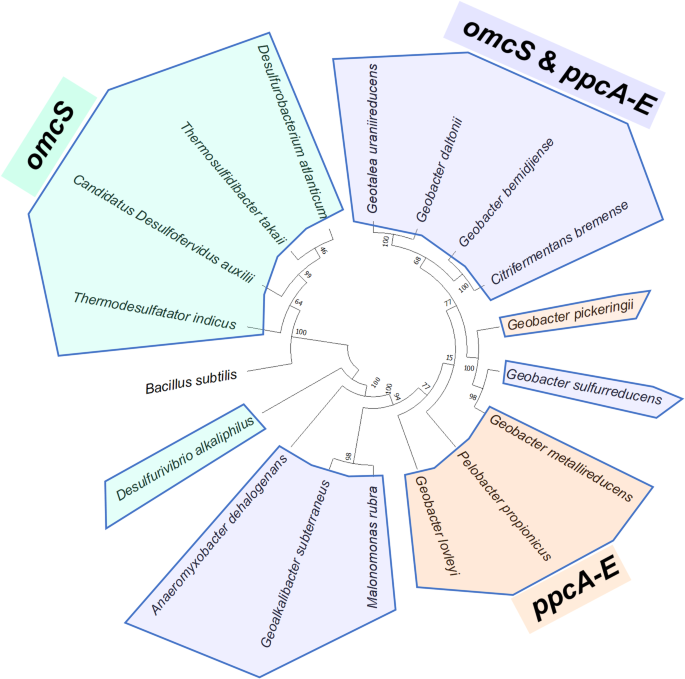Science Daily March 20, 2024
Extracellular electron transfer (EET) via microbial nanowires drives important environmental processes and biotechnological applications for bioenergy, bioremediation, and bioelectronics. However, the process is not clear. An international team of researchers (USA – Yale University, Portugal) showed that Geobacter sulfurreducens periplasmic cytochromes PpcABCDE inject electrons directly into OmcS nanowires by binding transiently with differing efficiencies, with the least-abundant cytochrome (PpcC) showing the highest efficiency. This defined nanowire-charging pathway was evolutionarily conserved in phylogenetically diverse bacteria capable of EET. OmcS heme reduction potentials were within 200 mV of each other, with a midpoint 82 mV-higher than reported previously. This could explain efficient EET over micrometres at ultrafast rates with negligible energy loss. According to the researchers engineering this minimal nanowire-charging pathway may yield microbial chassis with improved performance… read more. Open Access TECHNICAL ARTICLE

The OmcS nanowire-charging pathway via PpcA-E … Credit: Nature Communications volume 15, Article number: 2434 (2024)